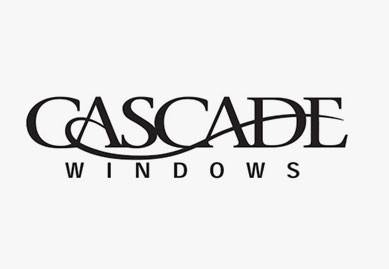Siding Replacement FAQ

Siding Replacement FAQ
The siding can last more than 20 years depending on the material and quality of installation. But eventually all siding will have to be replaced to protect the home’s foundation and interior. Finding the right siding is a challenging job as there are many factors to cons
ider when deciding on type, material, and installation.
To make it easier for San Francisco homeowners, demystify the process and help you make an informed decision, Best Exteriors compiled the most frequently asked questions about siding replacement. Call us (888) 853-6277 to request a quote!
Q: What are the warning signs siding needs to be replaced?
A: The lifespan of siding can be well over 20 years if it is well maintained. But eventually, any siding material will need to be replaced. So, if you find any issues below, it might be time to get a replacement.
Finish Discoloration
When vinyl siding is exposed to excessive ultraviolet light, discoloration and fading can occur. In addition to being brittle, faded vinyl is also prone to cracking or breaking. Siding made of wood can be stained or painted more easily, however, fading still indicates the siding’s age, and it might be time to replace it.
Increased Utility Bills
The siding on your San Francisco home may have lost its ability to provide insulation if you have noticed that your energy bills have increased substantially or if there are drafts or hot spots in your home.
Plant, moss, or mold growth
There are more reasons to worry about mold and moss than just aesthetics. Plant growth on your siding is a sign of high moisture storage. It can warn you of structural problems before they become serious.
Water damage
Your siding may have aged to the point where it has become too weak to shield your home from outdoor elements, allowing rainwater into your home and weakening the structure as well as damaging drywall on the inside.
Bubbling or warping
Vinyl siding that bubbles and warps has either been exposed to extreme heat or has been moistened beneath the siding. In either case, it no longer forms a protective barrier and has to be replaced.
Insect damage
Even though all siding can become infested, termites are particularly dangerous to wood siding. Look for woodpecker, squirrel, insect, and other wildlife damage on your siding.
Q: If siding needs to be replaced, what materials are available?
A: Most common siding replacement materials include:
Vinyl Siding
Vinyl siding is extremely popular because it is almost maintenance free. There are varieties of colors and shapes of PVC trim to choose from, starting with traditional Dutch lap and ending with scalloped trim that mimics historical wood. The PVC also resists water, mold, insects, and rot.
Cedar Siding
Cedar siding is composed of lightweight, low-density softwoods. This material is an excellent insulator and acoustic barrier due to its open cell structure and density. In spite of cedarwood’s numerous advantages, most San Francisco homeowners choose it primarily due to its aesthetic qualities.
Fiber Cement Siding
Siding made from fiber cement is primarily made of sand and concrete, making it resistant to fire, insects, and rot. The long-lasting nature of fiber cement siding makes it an excellent choice for many homeowners.
Foam-Backed Siding
This easy-to-maintain and easy-to-clean siding backed by insulation foam provides huge thermal benefits. Adding foam-backed insulation to your home may be your best choice if your electric bills are high or certain rooms in your home are warmer in summers or cooler during the winter.
Q: I want to replace my siding. How do I budget?
A: You may find it difficult to calculate the cost of replacing your siding. It is important to take into consideration the type of siding, the cost of labor, as well as your property’s unique characteristics. Start by considering the following factors when determining the cost of your siding replacement:
Siding Type
The cost of siding materials will vary widely. The most expensive siding is fiber cement, followed by wood. The cost of wood depends on its cut, color, and stain. The most cost-effective siding is usually vinyl siding.
Existing Siding Removal
You should expect your contractor to charge you for removing and disposing of your old siding.
Home Size
You may not realize it, but the size of the siding replacement area will determine the price. Siding is measured and priced by the square foot. The more you install, the more you pay.
Extras
It is likely that you will also have to replace other exterior components of your home when replacing your siding. Replaced components can include fascia, soffits, trims, and crown moldings.
Permits and inspections
In most cases and jurisdictions, a permit is required whenever major work is being performed on a home. Normally, siding replacement companies will handle the application process for you; however, permits still incur a price. Upon completion of the work, you might also need to obtain an inspection from your city or county.
Get a professional estimate
When contractors give an initial quote, they may merely look at the home’s exterior – a method that often results in costly change orders. A siding consultant from Best Exteriors will inspect and measure your San Francisco home to provide you with an accurate quote upfront.
Q: What is the best way to maintain my siding?
A: The proper maintenance of your siding is essential to the safety and security of your home. Keeping your siding in good condition for years to come is easy when you follow these tips.
Regular Cleaning
The siding on your home must be cleaned every six months to a year, regardless of whether it is synthetic or wood. A soft bristle brush and mild soap are all you need to clean siding. After scrubbing the siding gently, use your garden hose to rinse it.
It is also possible to use a pressure washer to clean vinyl or wood surfaces but be sure to take additional precautions. To avoid forcing water up between vinyl or wood slabs, stand at least 6 feet away and spray at a 90-degree angle. Fiber cement siding should not be power washed as this is another way in which it can be damaged.
Avoiding Harsh Chemicals
Cleaning your siding regularly is important, but some chemicals can damage the material. Bleach concentrates, liquid grease removers, and furniture cleaners should be avoided. Do not use steel wool or other abrasive scrubbers on the siding. It is possible for either of these items to damage your siding surface, which results in color fading and loss of water repellency.
Spotting Clean Mold and Mildew
Clean mold as soon as you find it so that it does not spread. As with regular cleaning, avoiding using chemical cleaning products is essential. Make your own cleaning agent by mixing a cup of vinegar with 1 gallon of water or use a cleaning agent designed specifically for the type of siding you have. It is, however, necessary to replace vinyl siding if you notice dry rot or holes when inspecting its condition for mold.
Repairing Cracks and Holes Promptly
A gap or crack in your siding may allow moisture into the walls, affecting the ability of your home to regulate its temperature. Moisture penetration that is not treated can result in mold and rot, which has a detrimental effect on your home’s structural integrity. You can avoid a more time-consuming and expensive repair project by calling a siding professional right away.
Interested in siding replacement in San Francisco? Contact Best Exteriors for a consultation or request a quote online! Call us (888) 853-6277 to request a quote!
Quality Work & Protection
To protect your investment, we offer a robust and competitive warranty on window replacement and installation services.
Affordable Pricing
We offer a wide range of price options to suit any project size and budget.
Service Professionals
We have licensed, insured, and background checked professionals that can replace or install windows at any home.



 all communications are private and not shared with other parties.
all communications are private and not shared with other parties.





















